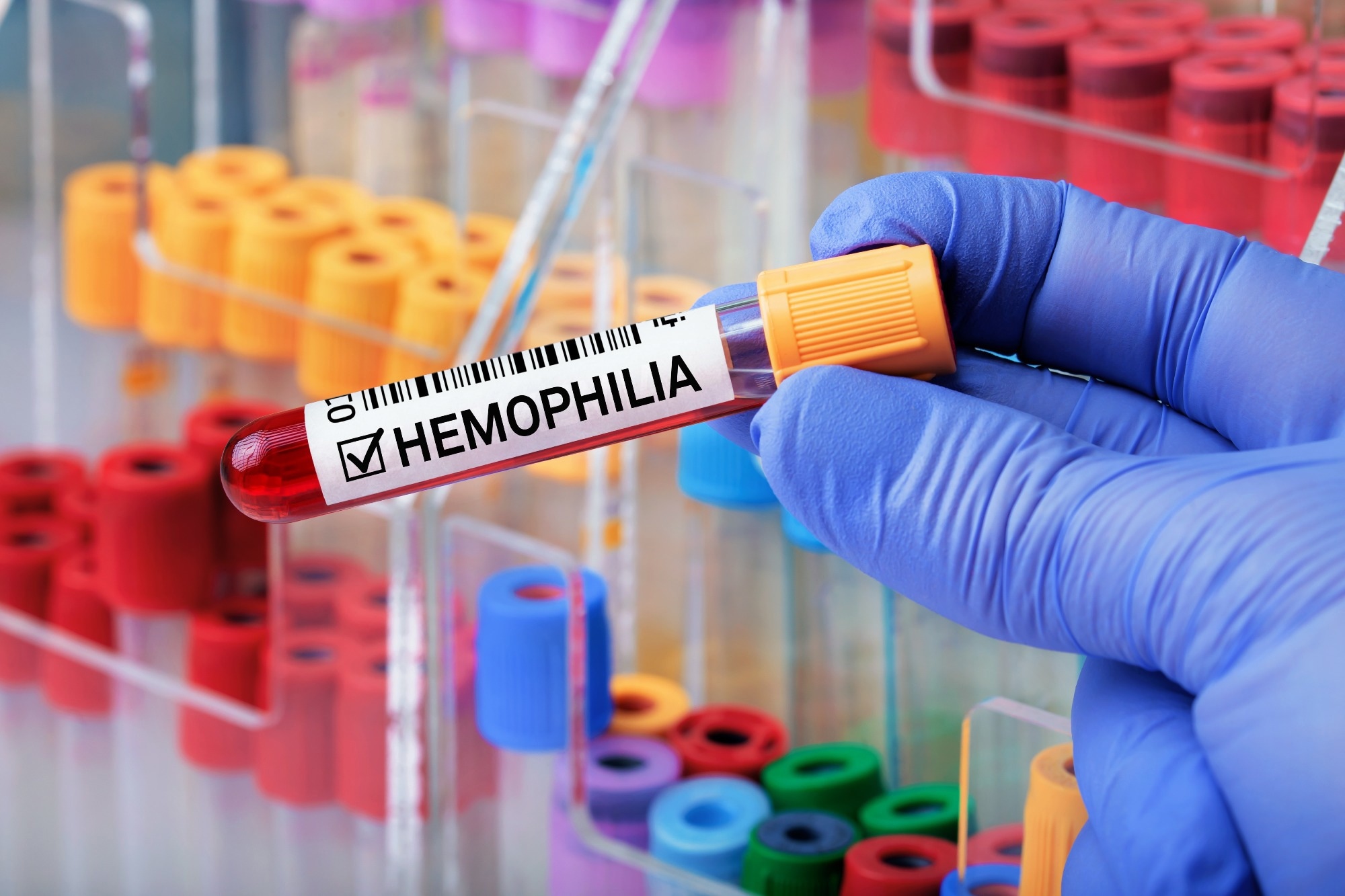Introduction
Von Willebrand disease
Platelet dysfunction
Deficiency of coagulation factors
Scurvy
Ehlers-Danlos syndrome
Fabry disease
Disseminated intravascular coagulation
Child abuse
References
Further reading
Hemophilia refers to a group of disorders that affect the blood’s clotting ability or coagulation. Coagulation is required to prevent bleeding in the event of a blood vessel breaking. The most common form of hemophilia is hemophilia A, which arises from a deficiency in clotting factor VIII. Around 1 in every 5,000 to 10,000 males is born with this condition.
 Image Credit: angellodeco/Shutterstock
Image Credit: angellodeco/Shutterstock
The main symptoms of hemophilia include internal or external bleeding, with accompanying symptoms that vary according to the severity of the condition. People with a severe form of the condition may experience severe, frequent, and spontaneous bleeding into their muscles and joints. In contrast, those with a mild form may only experience excess bleeding in response to trauma or injury.
The problems that this bleeding disorder can cause are similar to those seen in other diseases. Therefore, an accurate diagnosis of hemophilia must distinguish this condition from other diseases that may cause similar symptoms.
Von Willebrand disease
The bleeding symptoms associated with von Willebrand disease (vWD) may be similar to those of mild congenital hemophilia. However, patients with vWD are more likely to have mucosal bleeding than those with hemophilia.
In addition to more mucosal bleeding, vWD can also be diagnosed by measuring von Willebrand factor (VWF) antigen or von Willebrand factor (vWF) multimers in the blood.
Platelet dysfunction
In cases of platelet dysfunction, the bleeding tends to be mucocutaneous rather than musculoskeletal, the latter of which is the case in hemophilia. For most platelet disorders, the diagnostic test of choice is platelet aggregation studies.
Platelet agonists such as collagen, adenosine diphosphate (ADP), epinephrine, and ristocetin are tested to assess the aggregation of platelets by determining optical density. Platelet electron microscopy is another option, which can be used to assess the ultrastructure of the platelet.

 Read Next: What is Hemophilia?
Read Next: What is Hemophilia?
Deficiency of coagulation factors
In other coagulation factor deficiencies, musculoskeletal bleeding is uncommon. Thrombosis can sometimes occur in people with a factor VII or fibrinogen deficiency.
Notably, a combined deficiency of factors V and VIII may be mistaken for hemophilia A. Differential diagnosis is achieved by carrying out specific coagulation factor assays.
Scurvy
The bleeding that occurs in scurvy is generally mucosal rather than musculoskeletal. Furthermore, conditions such as sepsis, human immunodeficiency virus (HIV), pancreatitis, or malnutrition may also be present in scurvy cases. The diagnosis of scurvy is based on clinical findings and the presence of vitamin C deficiency.
Ehlers-Danlos syndrome
In Ehlers-Danlos syndrome, bleeding is mainly mucosal in origin rather than musculoskeletal. The skin of patients with this disease is often hyperextensible. Additionally, hypermobility syndrome is present in these patients. Ehlers-Danlos syndrome can be diagnosed based on clinical features, tissue biopsy, and genetic testing.
Fabry disease
Bleeding is mainly mucosal rather than musculoskeletal in Fabry disease. Other conditions that may be present alongside Fabry disease include kidney disease, heart disease, skin lesions called angiokeratomas, and pain in the extremities. Diagnosis of this condition is based on genetic testing and clinical findings.
 Image Credit: Shidlovski/Shutterstock
Image Credit: Shidlovski/Shutterstock
Disseminated intravascular coagulation
There are no symptoms or signs that can distinguish disseminated intravascular coagulation from hemophilia. Differential diagnosis is achieved using blood tests, which reveal a reduced platelet count and the absence of factor VIII autoantibodies.
Child abuse
It is typical to find inconsistencies in how trauma has occurred in child abuse cases. The healing process may vary across injuries and burns, in addition to bone fractures and/or bruises.
Anemia may also be present in cases of malnourishment or neglect. X-ray imaging may reveal evidence of fractures or bleeding in the brain or abdomen.
References
Further Reading